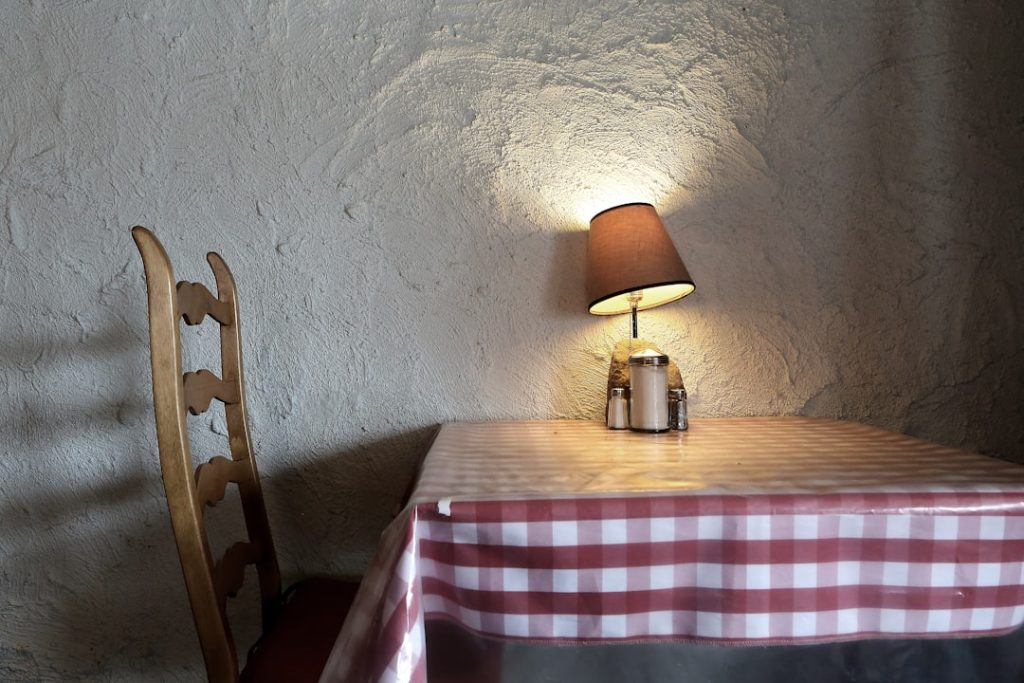Light up your space with indoor lamps

Indoor lighting is an essential aspect of any home. It not only provides illumination but also plays a crucial role in setting the mood, enhancing productivity, and promoting overall well-being. Proper lighting can transform a space, making it more inviting, comfortable, and functional. In this article, we will explore the importance of indoor lighting and provide tips for choosing the right lamps for your space, creating ambiance, using energy-efficient options, proper lamp placement, and maintenance and care.
The Importance of Indoor Lighting
The impact of lighting Cocige on mood, productivity, and overall well-being cannot be overstated. Bright, natural light has been proven to boost mood and increase productivity. On the other hand, dim lighting can create a cozy and relaxing atmosphere. The right lighting can make a room feel warm and inviting or bright and energizing.
Different areas of the home require different types of lighting. For example, the kitchen needs bright task lighting for food preparation, while the living room may benefit from softer ambient lighting for relaxation. Bedrooms should have a combination of ambient and task lighting to create a comfortable and functional space.
Choosing the Right Lamp for Your Space
When choosing a lamp for your space, there are several factors to consider. First, consider the size of the lamp in relation to the space it will occupy. A small lamp may get lost in a large room, while a large lamp may overwhelm a small space.
Next, consider the style of the lamp and how it will fit with your existing decor. Lamps come in a variety of styles, from modern and sleek to traditional and ornate. Choose a lamp that complements your decor style and adds to the overall aesthetic of the room.
Finally, consider the function of the lamp. Will it be used for task lighting or ambient lighting? Do you need adjustable lighting levels? Consider these factors when choosing a lamp to ensure it meets your specific needs.
Types of Indoor Lamps and Their Functions
There are several types of indoor lamps, each with its own function and purpose. Table lamps are versatile and can be used for both task lighting and ambient lighting. They are perfect for bedside tables, desks, or side tables in the living room.
Floor lamps provide ambient lighting and can be used to fill in gaps where overhead lighting may not be sufficient. They are great for reading corners or to add a touch of elegance to a room.
Pendant lights are suspended from the ceiling and provide focused task lighting or ambient lighting, depending on the style and placement. They are commonly used in kitchens, dining areas, or as statement pieces in living rooms.
How to Create an Ambiance with Indoor Lighting
Creating a specific mood or ambiance in a room can be achieved through strategic lighting techniques. One technique is layering, which involves using a combination of different light sources to create depth and dimension. This can be achieved by combining overhead lighting, table lamps, and floor lamps.
Another technique is accent lighting, which involves highlighting specific areas or features in a room. This can be achieved by using spotlights or track lighting to draw attention to artwork, architectural details, or decorative objects.
Energy-Efficient Indoor Lamps for a Greener Home

In today’s environmentally conscious world, energy-efficient lighting options are becoming increasingly popular. LED (light-emitting diode) and CFL (compact fluorescent lamp) bulbs are two energy-efficient options that can help reduce energy consumption and lower electricity bills.
LED bulbs are long-lasting and use significantly less energy than traditional incandescent bulbs. They also come in a variety of colors and can be dimmed to create the desired ambiance.
CFL bulbs are also energy-efficient and last longer than incandescent bulbs. They provide bright, white light and are ideal for task lighting.
When choosing energy-efficient lamps, look for the ENERGY STAR label, which indicates that the lamp meets strict energy efficiency guidelines.
Tips for Proper Placement of Indoor Lamps
Proper lamp placement is essential to ensure optimal lighting and avoid glare or shadows. When placing a lamp, consider the purpose of the light and the activities that will take place in the room.
Avoid placing lamps directly in front of mirrors or reflective surfaces, as this can cause glare. Instead, position lamps at an angle to minimize reflections.
To create balance in a room, use pairs of lamps on either side of a bed, sofa, or console table. This creates symmetry and provides even lighting.
The Benefits of Dimmer Switches for Indoor Lighting
Dimmer switches offer flexibility in lighting levels and can help create the desired ambiance in a room. They also provide energy savings by allowing you to adjust the brightness of the light to match your needs.
When choosing a dimmer switch, make sure it is compatible with the type of bulb you are using. LED bulbs require a specific type of dimmer switch, so be sure to check the packaging or consult a professional if you are unsure.
Installing a dimmer switch is relatively simple and can be done as a DIY project. However, if you are not comfortable working with electrical wiring, it is best to hire a professional electrician.
Indoor Lamps for Task Lighting and Reading
When it comes to task lighting and reading, it is important to choose a lamp that provides focused, bright light. Adjustable desk lamps are ideal for reading or working at a desk, as they can be positioned to direct light exactly where it is needed.
Floor lamps with adjustable heads are also great for task lighting. They can be positioned next to a chair or sofa to provide focused light for reading or other activities.
Using Indoor Lamps to Highlight Artwork and Decor
Lighting can play a crucial role in showcasing artwork and decor in your home. Use spotlights or track lighting to draw attention to specific pieces. Position the lights at an angle to minimize glare and create a dramatic effect.
For larger pieces of artwork, consider using picture lights, which are mounted directly above the artwork to provide focused lighting. This helps to highlight the details and colors of the piece.
Maintenance and Care for Your Indoor Lamps
To ensure that your indoor lamps last longer and continue to provide optimal lighting, it is important to clean and maintain them regularly. Dust the lampshade and base regularly using a soft cloth or feather duster.
If the lampshade is fabric, vacuum it gently using a brush attachment. For stained or dirty lampshades, spot clean with a mild detergent and water solution.
Check the bulbs regularly and replace them as needed. Be sure to turn off the lamp and allow it to cool before replacing the bulb.
Indoor lighting is an essential aspect of any home. It not only provides illumination but also plays a crucial role in setting the mood, enhancing productivity, and promoting overall well-being. By choosing the right lamps for your space, creating ambiance, using energy-efficient options, proper lamp placement, and maintaining and caring for your lamps, you can transform your home into a well-lit and inviting space.
If you’re looking to add a touch of elegance to your home decor, sconces lighting is the way to go. These wall-mounted fixtures not only provide functional lighting but also serve as stylish accents that can enhance the overall ambiance of any room. In a recent article by HQ Auto Lighting, they explore the various designs and styles of sconces lighting and how they can add an elegant touch to your home. Check out the article here to discover how you can elevate your interior design with these beautiful lighting fixtures.




